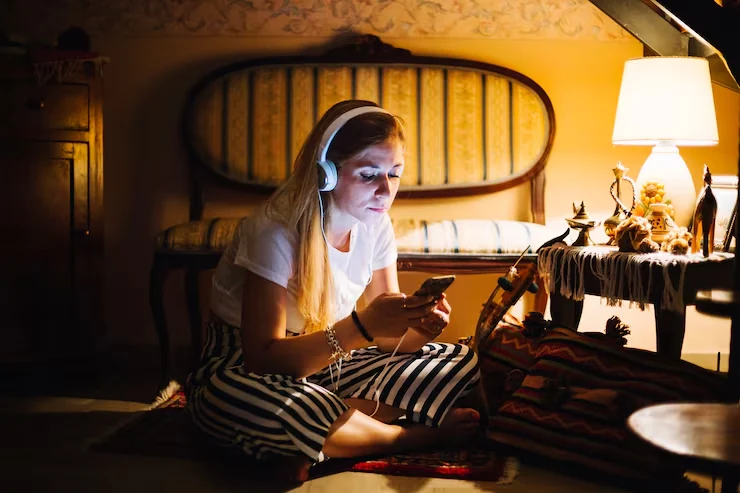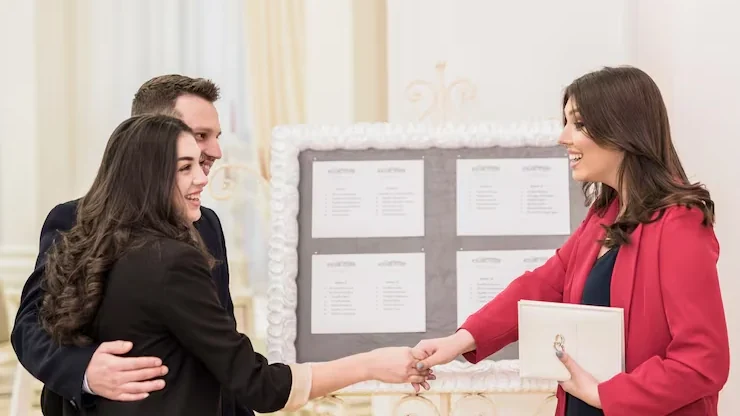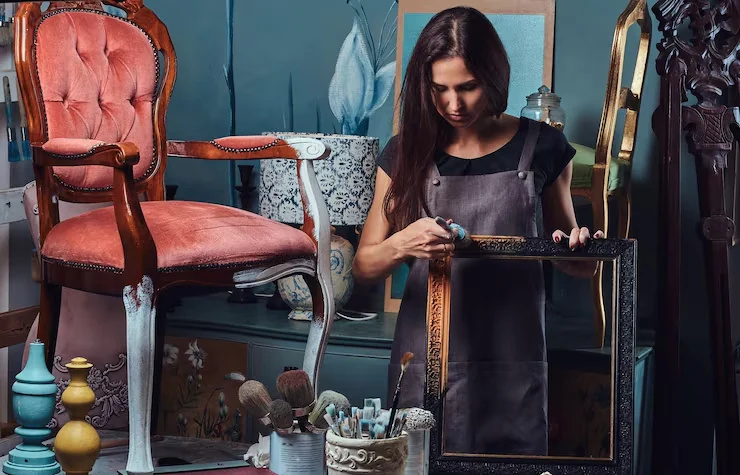Catherine II of Russia—better known as Catherine the Great—left more behind than just historical milestones and sweeping reforms. Her influence extended into art, architecture, and the very interiors she lived in. From ornate palace furnishings to controversial rumors of erotic décor, her legacy is as complex as it is captivating.
This article takes a close look at the design aesthetic tied to her reign, the blend of European and Russian elements, and the enduring fascination with what may or may not have existed behind palace doors.
Catherine the Great’s Taste in Interiors: Power and Aesthetics
Catherine understood that power could be communicated through space. The architecture and furnishings inside her palaces were selected and designed with intention. She worked closely with architects like Charles Cameron and Vincenzo Brenna—figures who treated furniture as an extension of architecture rather than an afterthought.
At Tsarskoye Selo and Pavlovsk, rooms were built with a sense of completeness. Chairs, tables, mirrors, and walls flowed in one consistent visual language. Cameron’s work, particularly in the Agate Pavilion, displayed clean lines and symmetry, balanced with ornamental flourishes typical of the period.
Rather than focusing on excess for its own sake, Catherine’s interiors reflected order, learning, and cultural ambition. The rooms she inhabited spoke to a monarch actively reshaping the image of Russian nobility.
Design Elements and Decorative Themes
Furniture during Catherine’s reign pulled heavily from both Rococo and Neoclassical styles. Rococo influences showed up in pastel tones, curved silhouettes, floral carvings, and gilded wood. Neoclassical elements, inspired by ancient Greece and Rome, introduced symmetry, geometric balance, and natural stone.
The use of green jasper, red agate, and lacquered finishes brought weight and refinement. Pieces were made not just to fill space, but to create harmony with the rooms’ proportions, wall treatments, and ceiling reliefs.
In particular, the Louis XVI-style furniture featured at Pavlovsk shows how closely Russian artisans aligned themselves with French decorative trends of the 18th century—while adapting them to local materials and imperial tastes.
Curious how structural design and public works tie into architectural legacy? Read more about the Francis Scott Key Bridge and its cultural symbolism.
The Controversial Legacy of the “Erotic Furniture”

Among the more provocative stories linked to Catherine the Great is the persistent rumor that she commissioned furniture with explicit sexual imagery—pieces that went far beyond the typical decorative styles of her time. The legend describes a private chamber within one of her imperial residences, possibly in Tsarskoye Selo or Gatchina, where chairs, tables, and room dividers featured carved erotic motifs and exaggerated forms. Allegedly, these items were crafted to both amuse and reflect her bold personality.
According to the accounts that circulate most often, this secret room was kept hidden during her reign and later concealed by her successors, particularly her son Paul I, who harbored resentment toward his mother and her legacy. The rumor gained renewed attention in the 20th century during World War II, when German Wehrmacht soldiers claimed to have stumbled upon such a chamber during the Nazi occupation of Tsarskoye Selo in 1941.
Reports from that time suggest that photographs were taken of a table and a chair decorated with pornographic carvings. Some versions even allege that entire walls were lined with phallic sculptures. These claims remain unverified. No authenticated photographic evidence has ever surfaced, and the supposed furniture was said to have been destroyed in the bombings and fires that damaged the palace during the war. Some speculate that Soviet authorities may have suppressed or destroyed the artifacts for ideological reasons, should they have existed.
Historians remain split. A few point to references in 19th-century journals that mention “furniture of unusual nature” found within the imperial estates, while others dismiss the tale entirely as a fabrication—possibly Nazi propaganda or the result of exaggerated soldier rumors. A less discussed theory is that the objects may have belonged to a later Romanov, possibly collected in the spirit of eccentric European erotic art, which was not unheard of among the nobility of the time.
Regardless of their origin—or existence—the story of Catherine’s so-called erotic furniture has endured. This endurance speaks less to the furniture itself and more to the cultural appetite for scandal. In many ways, the tale has been used as a narrative tool to reduce a powerful empress to caricature, framing her authority and independence through the lens of sexual deviance. Similar to how Cleopatra was portrayed in Roman accounts, Catherine’s image was shaped not just by her policies or military achievements but by myths that prioritized titillation over substance.
This fixation reflects ongoing discomfort with women in leadership, particularly those who defy convention and maintain control without relying on traditional models of subservience. While it is tempting to focus on the dramatic or lurid, doing so risks overlooking the more significant impact Catherine had as a political leader, patron of the arts, and reformer.
What remains, then, is less a question of whether the furniture existed and more a reflection of how myths persist. The story, real or imagined, offers insight into the intersection of power, perception, and the public’s enduring fascination with private lives behind palace walls.
French Taste, Russian Grandeur

Catherine’s interest in French philosophy and aesthetics extended to her material surroundings. She collected art from Dutch and French masters, commissioned porcelain dinner services like the Flora Danica set from Denmark, and brought Western architectural ideals into Russian spaces.
What resulted was a hybrid style: the rationality and structure of Neoclassicism meeting the softness and decor of Rococo, layered with Russian craftsmanship. Local artisans worked under the guidance of foreign architects, producing pieces that balanced ornamentation with function.
Some furnishings featured marble tops in bold colors, rich brocade fabrics, and lacquered wood. Even today, surviving examples from her reign stand in the Hermitage Museum and Pavlovsk Palace.
For more thoughtful cultural reflections and long-form commentary, visit Netwyman Blogs for similar articles.
Catherine in Popular Culture
Modern portrayals of Catherine often gravitate toward dramatizing her love life. From HBO’s regal depiction with Helen Mirren to Hulu’s satirical version starring Elle Fanning, Catherine is frequently shown as a figure of ambition, intelligence—and scandal.
These portrayals reflect the tension between her documented achievements and the myths that followed her. Stories about her “erotic furniture” often function more as political and social commentary than reliable history. But they also show the public’s ongoing interest in her life.
Her rise to power, her strategic relationships, and her cultural reforms often take a backseat to rumors—many of which were likely invented to diminish her authority.
What Catherine’s Furniture Can Tell Us Today
Regardless of whether the rumored erotic furnishings were real, Catherine’s approach to interiors was consistent with her broader vision: a refined state governed by order, art, and reason. She surrounded herself with the objects, textures, and ideas that aligned with Enlightenment ideals.
The harmony of her spaces was less about perfection and more about expressing identity, legacy, and control. Every marble surface, gilded trim, and carved figure carried meaning. And it still does—both as preserved history and as inspiration for interior design.
Into curated living, elegance, and smart aesthetic choices? The philosophy of intentional design extends to modern luxury items, much like the darry ring luxury items that symbolize personal connection today. For more insights beyond historical design, explore our other features.
Catherine’s Interiors: A Statement of Authority and Intention

Catherine the Great’s furniture is far more than a decorative detail in the story of her reign. It reflects how she used physical space as a medium to communicate her values, ambition, and identity. Every choice—from architectural layout to material selection—was made with a clear awareness of political symbolism and aesthetic cohesion. These pieces weren’t simply functional objects; they were part of a broader system that linked art, intellect, and imperial identity.
Her passion for Enlightenment philosophy, her correspondence with European thinkers, and her diplomatic relationships all fed into the visual language of her court. Through interior design, she positioned Russia as a cultural force on par with its European counterparts. Gilded consoles, marble-topped commodes, and Neoclassical symmetry weren’t just trends—they were carefully chosen signals of refinement and permanence.
Even the most debated stories surrounding her legacy, like the alleged erotic furniture, speak to how potent her image became. Whether admired, scrutinized, or misrepresented, her influence endured in part because her aesthetic choices were inseparable from her authority.
Catherine’s rooms weren’t accidental. They were calculated, richly layered environments where art, architecture, and ideology aligned. Her palaces still stand as evidence—not just of wealth or extravagance—but of a ruler who understood the importance of surrounding herself with symbols that reinforced her control, intellect, and vision.
Her interiors remain an enduring part of her story: not just furnishings, but artifacts of a reign that reshaped Russia’s image, inside and out.
To learn more about artistic interiors, thoughtful living, and cultural design cues, visit Plant Sumo for more articles and recommendations.





